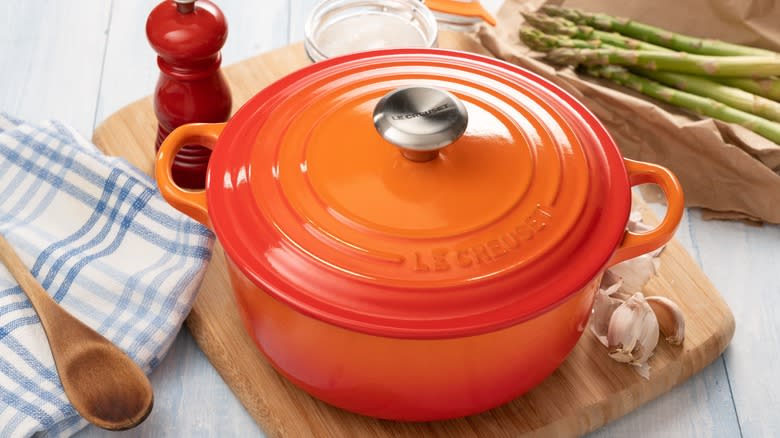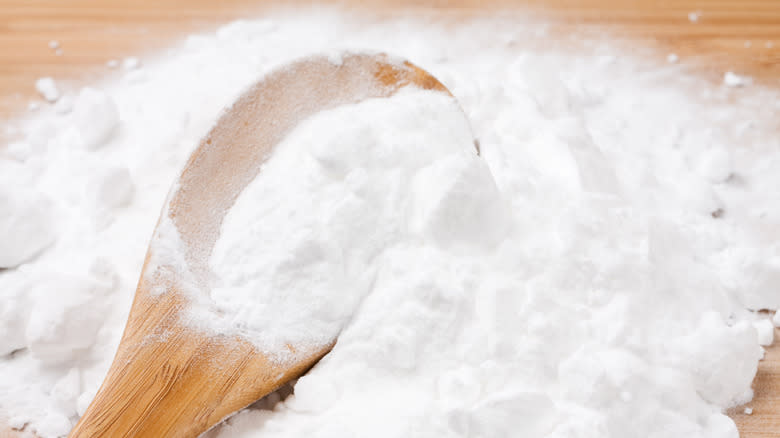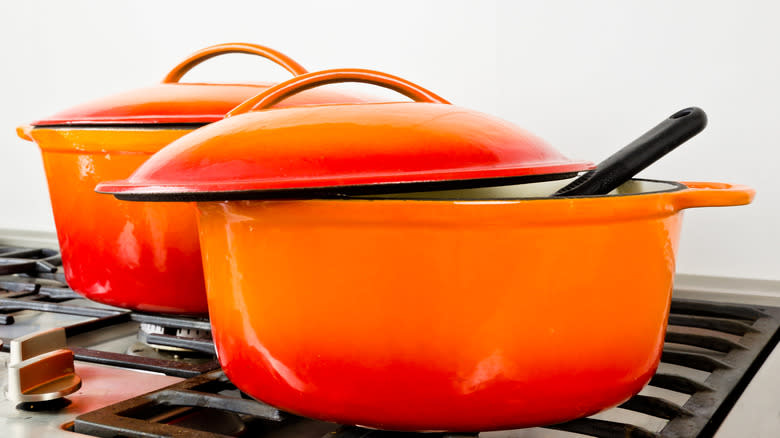The Best Way To Clean Stained Enamel Cookware

Once you buy it for the first time, enamel cookware is the kitchen product you'll keep coming back to over and over again. Especially if you're dealing with enamel cookware with a cast iron interior or stainless steel interior, you're looking at the sort of product that conducts heat marvelously, in addition to being highly resistant to both humidity and acidic foods (although chipping is a bit of a concern).
Cleaning it, though, is another matter. In addition to the fact that you probably don't want to put it in the dishwasher, there are several things you should know about how to clean enamel cookware. The basic cleaning practices are simple, but the real issue with how to deal with your enamel appliances is what to do if the cookware gets discolored. It may not shock you to know the answer here is the old kitchen cleaner's standby: baking soda.
Read more: The Best Way To Clean That Nasty Grease Off Of Your Kitchen Cabinets
Use Baking Soda Only After Trying Easier Methods

Your first step, though, is to try the more basic solution to the issue of discoloration: good old soap and water. You can soak your Dutch oven or whatever else in hot, soapy water — while this is normally the worst thing you can do for anything cast iron, that enamel covering protects it from rust. After you're confident you've loosened things up, hit it with a scrubbing sponge or scouring pad. Hopefully, that'll take care of the issue.
If not, that's where the baking soda comes in. As a non-toxic mild alkali that doesn't harm what you're trying to clean, baking soda is great for a myriad number of cleaning applications — including getting stubborn gunk off grill grates, dealing with greased-up broiler pans, fixing the tarnish on brass pans, and even taking care of oven knobs. There are a ton of cleaning applications for baking soda.
Much like other baking soda cleaning methods, the move here is to get it on the pot or pan and let it sit while the white powder does its work. In this case, you want to fill the pot halfway with water and add baking soda. Heat the water and let it simmer for around 6-10 minutes. When you wash the pot out, the discoloration should be fully taken care of.
There Are Other Tricks If Those Don't Work

That said, if the baking soda trick doesn't work, you're not out of luck, and there are a couple of other solutions you can try. The first is a solution of one part bleach (an alkaline, like baking soda -- just a much stronger one) per three parts water. The process here is much longer than the others: you have to let this stand for at least a night if not two, but it should take care of the problem even without further scrubbing.
The second option uses enamel's natural acid resistance: Bar Keeper's Friend. Bar Keeper's Friend is a white, powdery mixture of oxalic acid, abrasives, and detergents that helps with the toughest stains and grime. Just be aware this stuff is way more caustic than the softer options -- although it's certainly safe on enamel.
If you've tried everything and the discoloration is so far in there that it won't come off, though, don't fret: it's not going to harm the quality of your food. Sure, it might not look great — that's why you were trying to get rid of it in the first place — but your cookware is still completely usable even if it has some stains. Hopefully, the baking soda trick will take care of your issue, or at least the harder stuff will.
Read the original article on Daily Meal.

